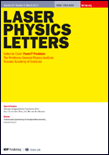
LASER PHYSICS LETTERS
Scope & Guideline
Fostering Excellence in Laser Science
Introduction
Aims and Scopes
- Quantum Optics and Quantum Information:
The journal features research on quantum coherence, entanglement, and quantum state manipulation, exploring the foundational aspects and applications of quantum mechanics in optical systems. - Nonlinear Optics:
Papers often discuss phenomena such as solitons, self-focusing, and nonlinear interactions in various media, highlighting advancements in understanding and utilizing nonlinear optical effects. - Laser Technology and Applications:
Research includes developments in laser systems, such as fiber lasers, solid-state lasers, and semiconductor lasers, focusing on efficiency, power scaling, and novel configurations for industrial and medical applications. - Photonics and Metamaterials:
The journal publishes studies on the manipulation of light using photonic structures and metamaterials, with an emphasis on applications in imaging, sensing, and information processing. - Optical Materials and Coatings:
Research on the development of new optical materials, coatings, and devices that enhance laser performance and enable new functionalities is a significant focus area. - Plasma Physics in Laser Interactions:
Investigations into the interactions of high-intensity laser fields with matter, including plasma generation and diagnostics, are prominently featured.
Trending and Emerging
- Quantum Technologies:
There is a notable increase in research focused on quantum technologies, including quantum key distribution, quantum teleportation, and the use of entangled photons, underscoring the growing interest in harnessing quantum mechanics for secure communication and computation. - Integrated Photonics:
Emerging studies on integrated photonic circuits and systems are trending, as researchers seek to miniaturize and enhance the functionality of photonic devices for applications in telecommunications and sensing. - Machine Learning in Optics:
The application of machine learning techniques to optimize laser systems, analyze optical data, and enhance imaging techniques is gaining popularity, reflecting broader trends in the intersection of AI and photonics. - Laser-Driven Particle Acceleration:
Research on using lasers for particle acceleration, particularly in the context of high-energy physics and medical therapies, is increasingly prevalent, driven by advancements in laser technology. - Metamaterials and Optical Devices:
There is a growing focus on the development and application of metamaterials for manipulating light in novel ways, leading to advances in imaging, cloaking, and other optical functionalities.
Declining or Waning
- Classical Laser Applications:
Research centered on traditional laser applications, such as basic laser cutting or engraving, has seen a reduction as the field increasingly shifts towards advanced quantum and nonlinear optics. - Static Optical Systems:
The focus on static and non-adaptive optical systems has waned, with more emphasis now placed on dynamic, tunable, and adaptive systems that respond to external stimuli. - Basic Laser Physics:
Studies that primarily address fundamental laser physics without significant application aspects are becoming less frequent, as the community trends towards research with clear practical implications.
Similar Journals
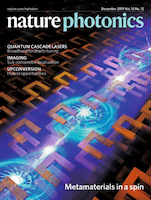
Nature Photonics
Advancing Knowledge at the Intersection of Light and MatterNature Photonics, published by NATURE PORTFOLIO, stands as a leading journal in the realm of photonics, specializing in the convergence of atomic and molecular physics and optics, as well as electronic, optical, and magnetic materials. Established in 2007 and continuing through 2024, this esteemed journal boasts an impressive 2023 ranking of Q1 in both its primary categories, highlighting its importance and influence within the scientific community. With a Scopus rank of #3 in both materials science and physics categories, and a remarkable 99th percentile ranking, Nature Photonics serves as a vital platform for disseminating pioneering research and innovative discoveries that drive the field forward. Although it does not currently offer open access options, the journal remains accessible to a broad audience interested in the latest advancements in photonics, including researchers, professionals, and students eager to explore cutting-edge developments. By fostering a community of collaboration and knowledge exchange, Nature Photonics continually shapes the future of photonics research.
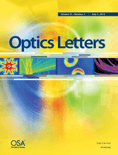
OPTICS LETTERS
Shaping the Landscape of Optics Since 1977OPTICS LETTERS is a premier academic journal published by the Optica Publishing Group, dedicated to advancing the field of optics and photonics. Since its inception in 1977, it has maintained a strong reputation for publishing high-impact research, holding a distinguished Q1 category ranking in Atomic and Molecular Physics, as well as Optics, making it a vital resource for researchers and professionals alike. With an impressive Scopus rank of #55 out of 224 in its field, OPTICS LETTERS continues to shape the discourse and innovation in optical science. Authors benefit from its extensive international reach, while readers gain access to cutting-edge studies that address both theoretical and applied aspects of optics. Although the journal currently does not offer open access options, its rigorous peer-review standards ensure that every publication meets the highest academic criteria, making it an essential journal for anyone looking to stay at the forefront of optical research.

Laser & Optoelectronics Progress
Illuminating Innovations in Laser TechnologyLaser & Optoelectronics Progress, published by the Shanghai Institute of Optics and Fine Mechanics, Chinese Academy of Sciences, is a pivotal journal dedicated to advancing the fields of optics and electronic engineering. With an ISSN of 1006-4125, this journal provides a comprehensive platform for groundbreaking research focused on lasers, optoelectronic devices, and their practical applications. Although currently categorized in Quartile 4 in both Atomic and Molecular Physics, and Electrical and Electronic Engineering, it serves as an essential resource for disseminating innovative findings and techniques to a global audience. Researchers and scholars will find value in its commitment to fostering collaboration and knowledge-sharing amidst the rapidly evolving landscape of optical sciences. As a key contributor to the academic community, Laser & Optoelectronics Progress aims to bridge gaps between theory and practice, ultimately catalyzing advancements that enhance technological evolution in the field.

JOURNAL OF THE KOREAN PHYSICAL SOCIETY
Bridging Ideas and Innovations in Physical ResearchJOURNAL OF THE KOREAN PHYSICAL SOCIETY is a prominent academic journal dedicated to advancing the field of physics, published by the prestigious Korean Physical Society. With its extensive contribution to the scientific community since its inception in 1996, this journal serves as an essential platform for the dissemination of innovative research findings in various branches of physical science. Despite its current categorization in Q4 and a ranking reflecting its early-stage impact relative to peers, it remains a valuable resource for researchers, professionals, and students eager to explore developments in general physics and astronomy. The journal is accessible in both print and electronic formats, making it convenient for a global audience. Each issue aims to foster collaboration and knowledge-sharing within the field, ensuring that it remains relevant and instrumental in shaping future research directions. Located in South Korea, the journal continues to nurture a vibrant academic community, contributing to the ongoing dialogue in the global scientific arena.
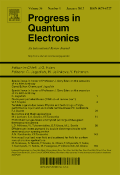
PROGRESS IN QUANTUM ELECTRONICS
Exploring the Frontiers of Quantum InnovationPROGRESS IN QUANTUM ELECTRONICS, published by PERGAMON-ELSEVIER SCIENCE LTD, is a premier international journal that serves as a critical forum for the dissemination of high-quality research in the fields of atomic and molecular physics, electrical engineering, and materials science. With its esteemed Q1 category ranking in several disciplines, including Atomic and Molecular Physics, Electrical and Electronic Engineering, and Electronic, Optical and Magnetic Materials, this journal commands a high impact factor and is recognized for its rigorous peer-review process. Established in 1969 and evolving through various phases, the journal currently compiles cutting-edge research that drives advancements in quantum technologies. Researchers, professionals, and students alike are invited to explore a wealth of knowledge and stay updated on pioneering developments in quantum electronics, enhancing their understanding and contributing to the progression of this dynamic field.
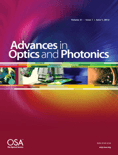
Advances in Optics and Photonics
Shaping Tomorrow's Optical Discoveries TodayAdvances in Optics and Photonics, published by the Optica Publishing Group, stands at the forefront of research dissemination in the fields of Atomic and Molecular Physics and Optics, alongside its prominence in Water Science and Technology. With an impressive Q1 ranking in both categories and a Scopus rank of #2/224, this journal boasts a 99th percentile status, underscoring its significance in the academic community. As a beacon of knowledge since its inception in 2009, the journal is dedicated to featuring cutting-edge research, innovative methodologies, and transformative applications in optics and photonics that can drive advancements across diverse scientific domains. While not an open-access journal, it provides vital insights for researchers, professionals, and students eager to stay updated on emerging trends and breakthroughs. With a convergence period extending to 2024, Advances in Optics and Photonics is positioned as an essential resource for anyone looking to explore the evolving landscape of light-based technologies.

OSA Continuum
Transforming Discoveries into Practical SolutionsOSA Continuum, published by the Optica Publishing Group, is a distinguished open access journal dedicated to advancing research in the realms of Atomic and Molecular Physics, Optics, and Electronic and Electrical Engineering. Since its inception in 2018, this journal has rapidly positioned itself as a significant platform for disseminating cutting-edge findings, achieving impressive Scopus rankings with a 61st percentile in Electrical and Electronic Engineering and 57th in Atomic and Molecular Physics. Based in the United States, the journal not only promotes scholarly dialogue among researchers and professionals but also plays a crucial role in bridging theoretical advances with practical applications in optical and material sciences. Its open access format ensures broader visibility and accessibility of research outputs, fostering innovation and collaboration across disciplines. With its ongoing commitment to excellence, OSA Continuum is crucial for anyone involved in these dynamic fields.

LASER PHYSICS
Illuminating the Future of Laser ScienceLASER PHYSICS is a premier academic journal published by IOP Publishing Ltd, dedicated to the exploration and advancement of fundamental and applied research in the fields of Atomic and Molecular Physics, Optics, Condensed Matter Physics, Industrial and Manufacturing Engineering, and Instrumentation. Since its inception in 1996, the journal has been a vital resource for researchers and professionals, contributing significantly to the collective understanding of laser technology and its applications. With a consistent Q3 ranking across several sub-disciplines in the 2023 categories, LASER PHYSICS is recognized for its rigorous peer-reviewed articles that push the boundaries of current knowledge. Although primarily subscription-based, the journal aims to disseminate high-quality research to enhance the scientific community's collaboration. As the journal continues to shape the future of laser science until 2024 and beyond, it stands as an essential platform for both emerging and established scholars seeking to publish innovative findings in this dynamic field.
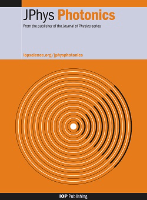
Journal of Physics-Photonics
Illuminating the Future of Photonics ResearchJournal of Physics-Photonics, published by IOP Publishing Ltd in the United Kingdom, is an esteemed Open Access journal that has been at the forefront of research in the field of photonics since its inception in 2018. With an impressive portfolio, the journal has achieved Q1 ranking in 2023 across multiple disciplines, including Atomic and Molecular Physics, Electrical and Electronic Engineering, and Electronic, Optical, and Magnetic Materials. This positions it among the leading journals in these areas, reflecting its significant influence and contribution to advancing knowledge and innovation. The journal aims to disseminate high-quality research findings that encompass a wide range of topics in photonics, promoting interdisciplinary approach that fosters collaboration among researchers, professionals, and students. With its commitment to open access, Journal of Physics-Photonics ensures that groundbreaking research is accessible to all, empowering a global audience to engage with and benefit from the latest advancements in photonic technologies.
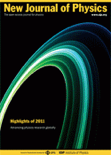
NEW JOURNAL OF PHYSICS
Unveiling the universe, one discovery at a time.NEW JOURNAL OF PHYSICS, published by IOP Publishing Ltd, is a prestigious open-access journal that has been at the forefront of the physics community since its inception in 1998. With an impact factor that places it in the Q1 category of Physics and Astronomy (miscellaneous) and a commendable ranking of #49 out of 243 in the general physics and astronomy category according to Scopus, this journal is recognized for its significant contribution to advancing research in the field. The journal caters to a broad scope of topics, providing a platform for the dissemination of cutting-edge research findings and innovative theoretical explorations. Operating from the United Kingdom, it offers a truly international perspective, making its contents accessible and impactful to a global audience. With robust open-access options, the NEW JOURNAL OF PHYSICS ensures that research findings are freely available, promoting collaboration and knowledge sharing among researchers, professionals, and students alike. This commitment to accessibility, combined with its high-quality content, makes it an essential resource for anyone engaged in the physics community.